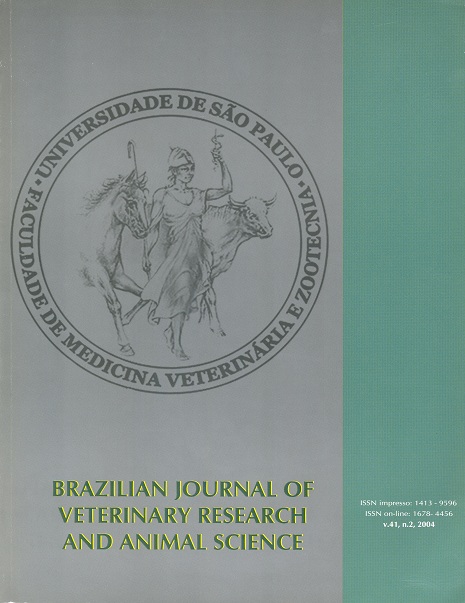Assessment of the Luteinizing Hormon (LH) use in ovulation induction in sows
DOI:
https://doi.org/10.1590/S1413-95962004000200007Keywords:
LH, Synchronization, Ovulation, Gonadotrophins, SowsAbstract
The research, developed in a swine production system, examined the effectivity of luteinizing hormone (LH) in ovulation induction. Twenty four sows compose the control group and tirthy two sows received intramuscular aplication of 600 IU of eCG (Novormon 5000®), 24 h after weaning and 5 mg of LH (Lutropin - V ®), 56 h after eCG injection (treated group). Oestrus were observed twice a day, the ovulation detected by transcutaneous ultrasonography and ovulation rate (OR) determined by corpora lutea counting. The weaning-to-estrus interval (WEI) were reduced (P=0,01) by treatment (87,4 vs 98,5 h). The ovulations occured among 32 and 48 h (37,25 ± 3,65) after LH and were diferent (P < 0,0001) of control (63,67 ± 20,22, range: 32 - 104 h). The OR of treatment was similar (P = 0,2) on the control (23,16 ± 12,19 vs 20,08 ± 5,19, respectively).Downloads
Download data is not yet available.
Downloads
Published
2004-04-01
Issue
Section
UNDEFINIED
License
The journal content is authorized under the Creative Commons BY-NC-SA license (summary of the license: https://
How to Cite
1.
Candini PH, Moretti A de S, Zanella EL, Silveira PRS da, Viana CHC, Valentim R. Assessment of the Luteinizing Hormon (LH) use in ovulation induction in sows. Braz. J. Vet. Res. Anim. Sci. [Internet]. 2004 Apr. 1 [cited 2026 Jan. 18];41(2):118-23. Available from: https://revistas.usp.br/bjvras/article/view/6266





